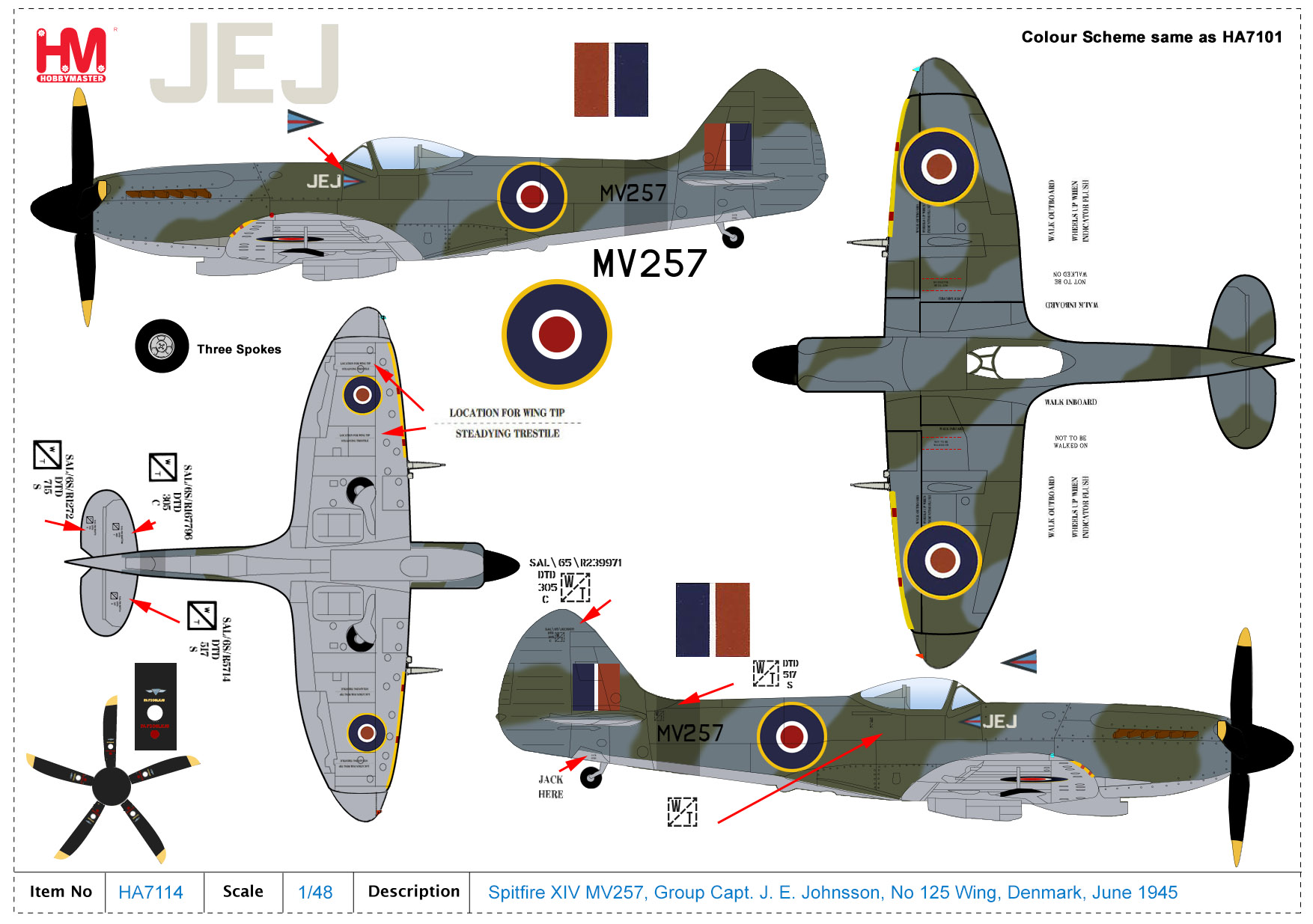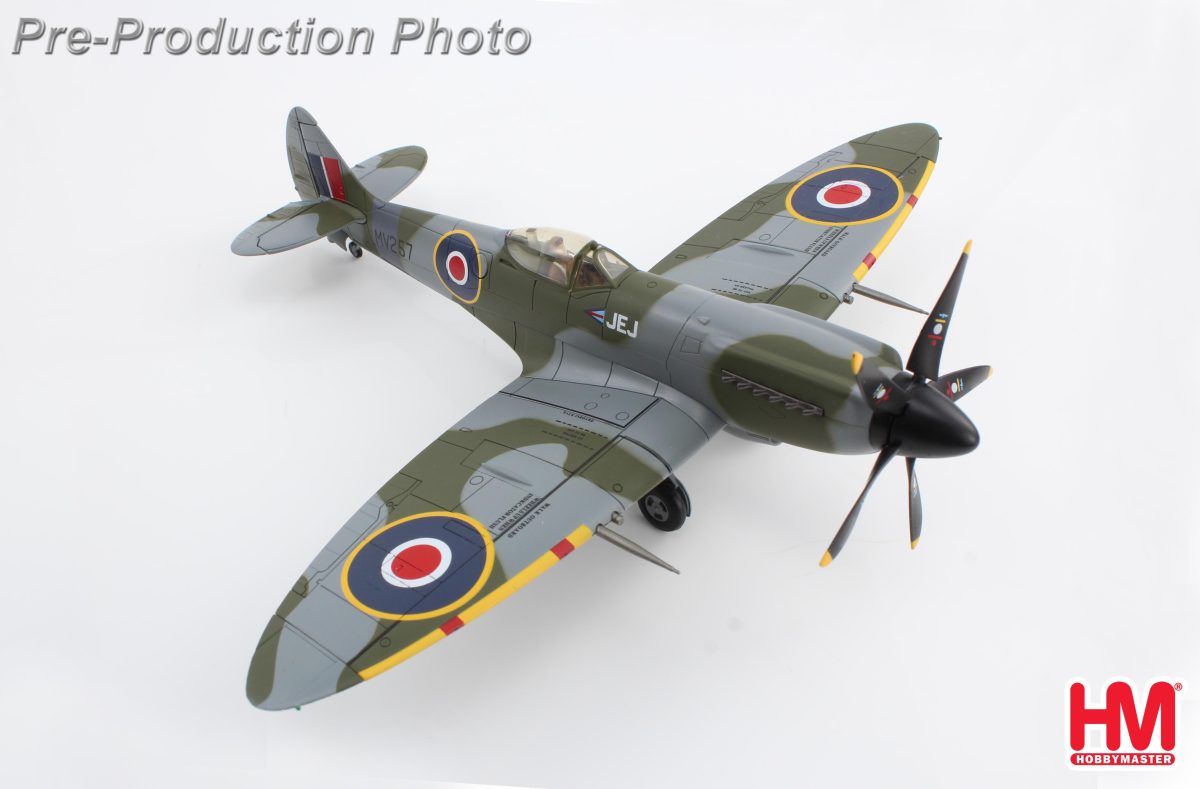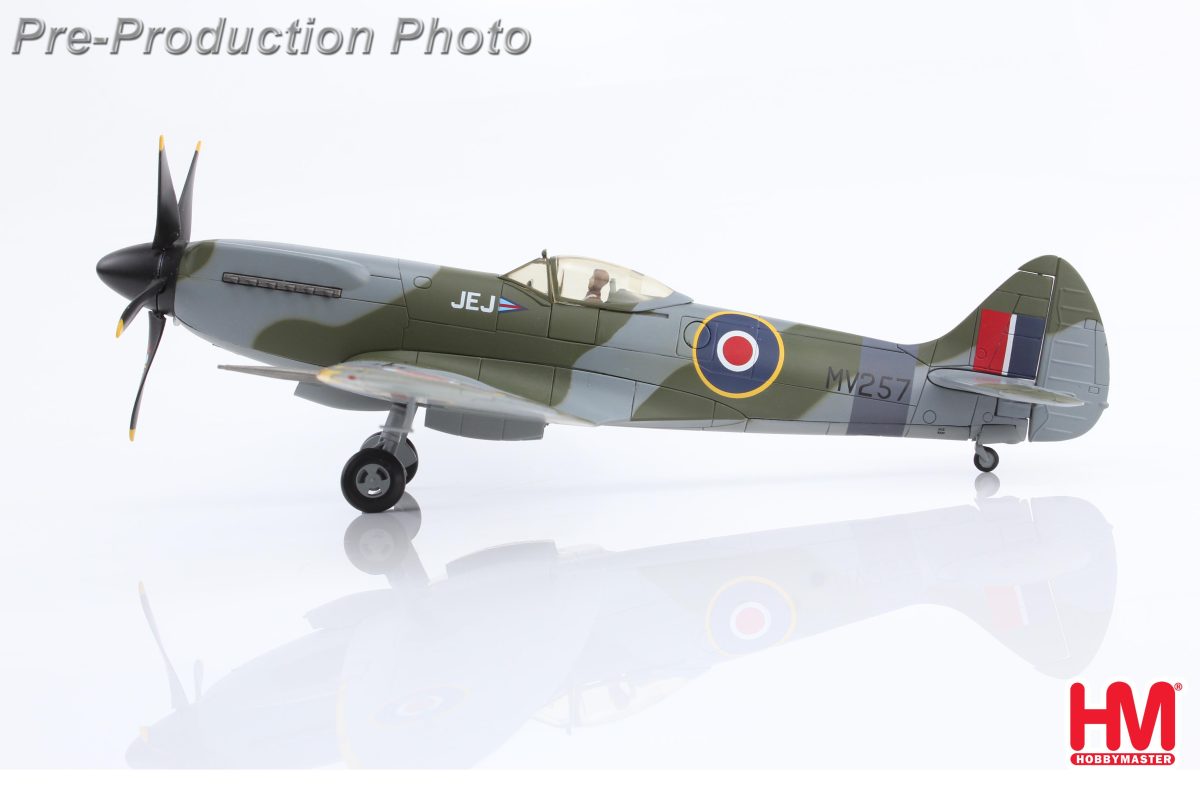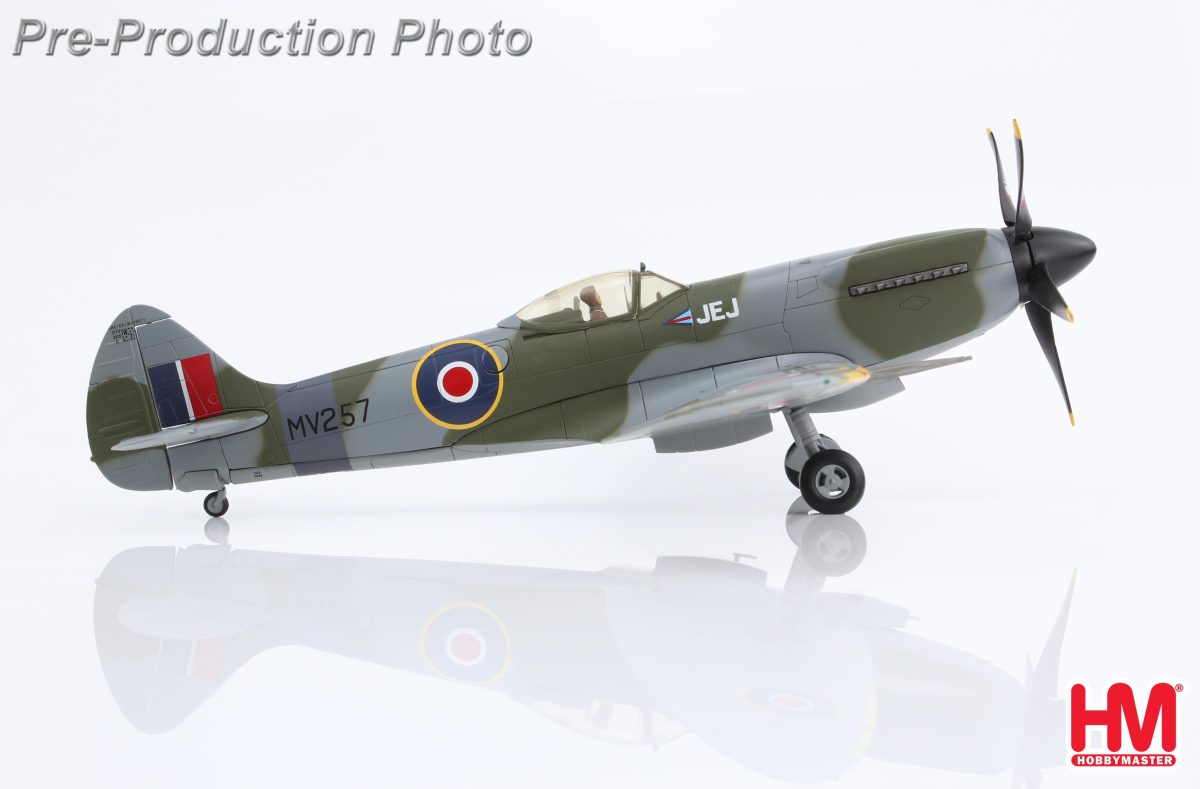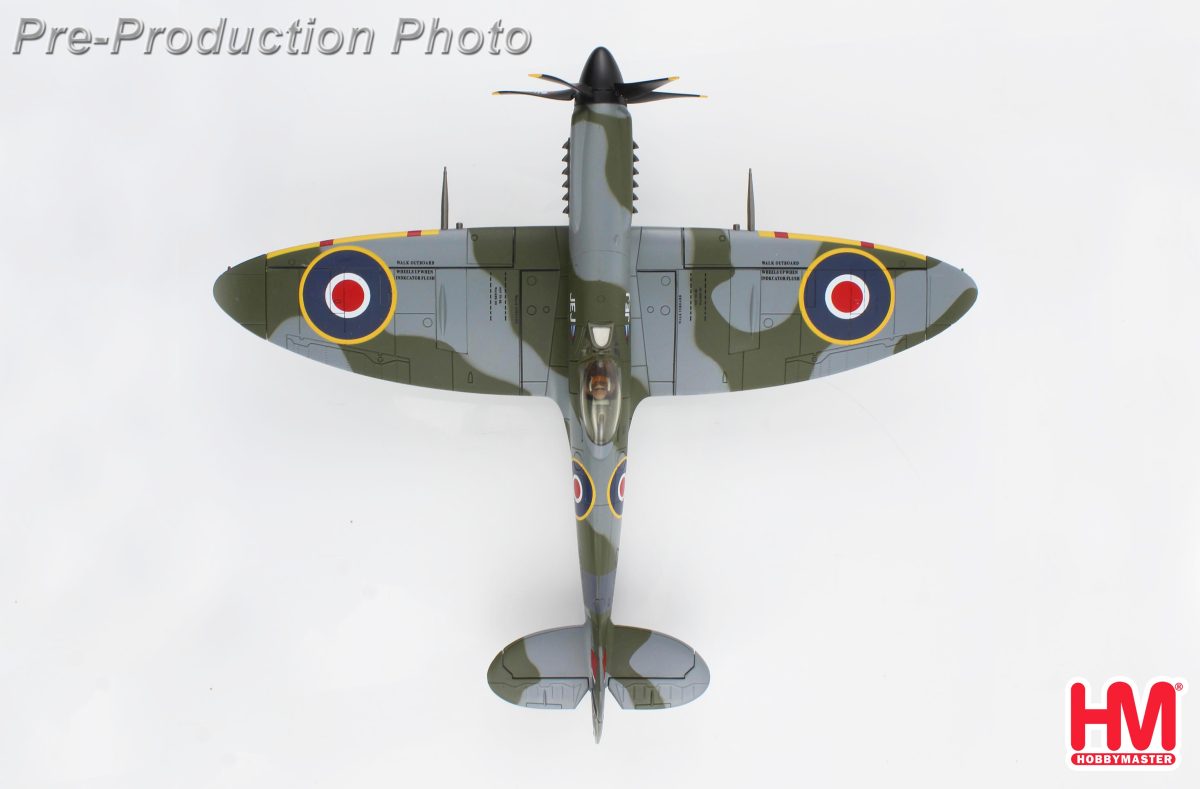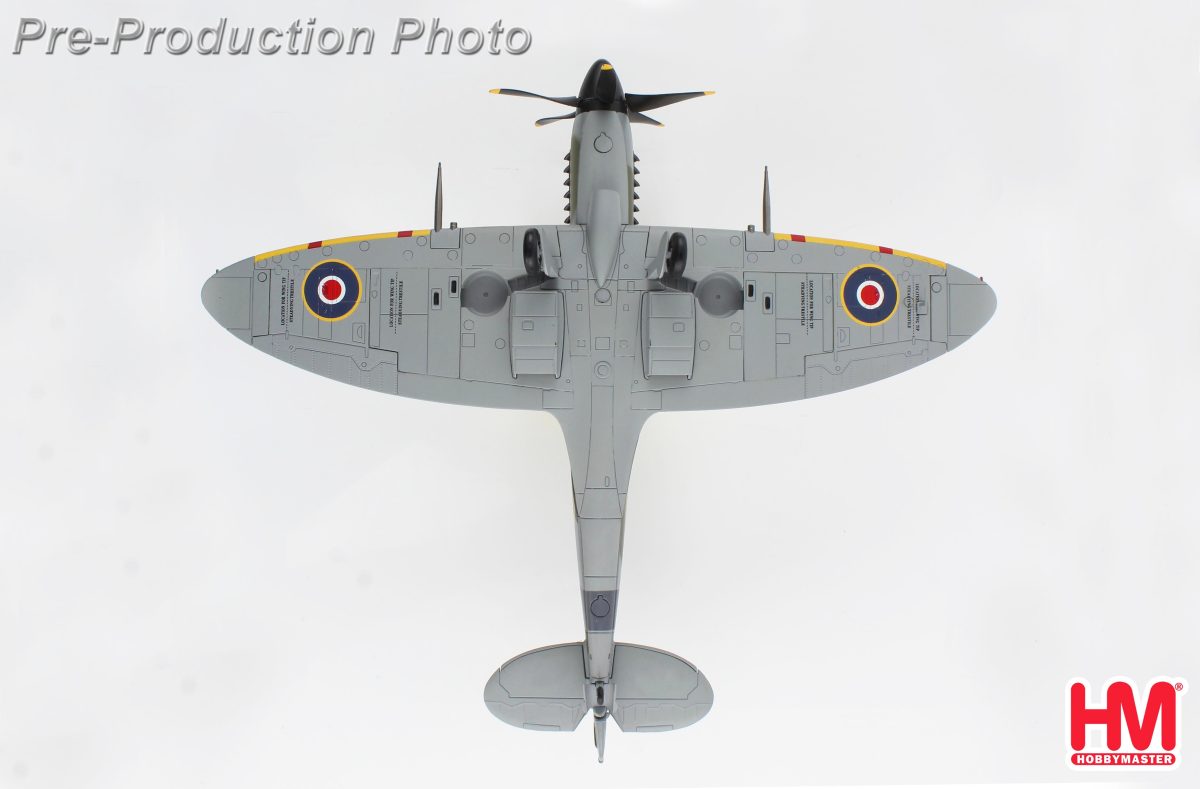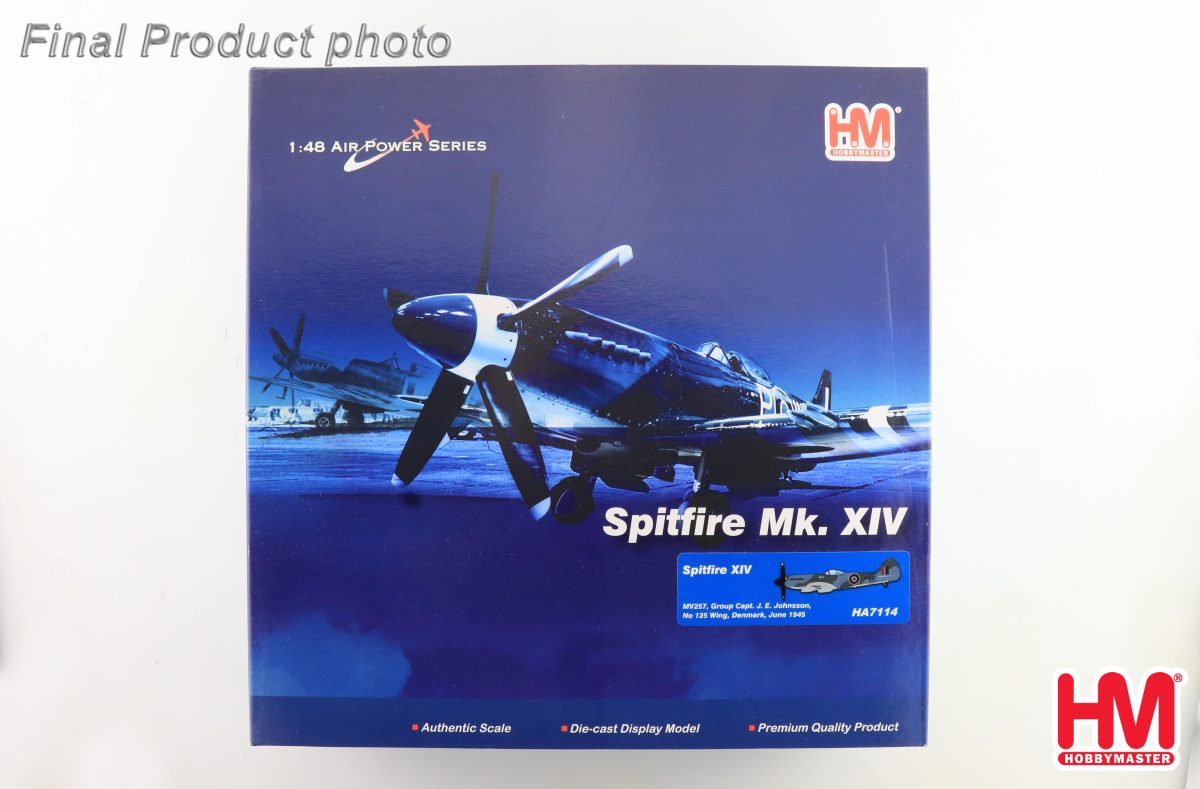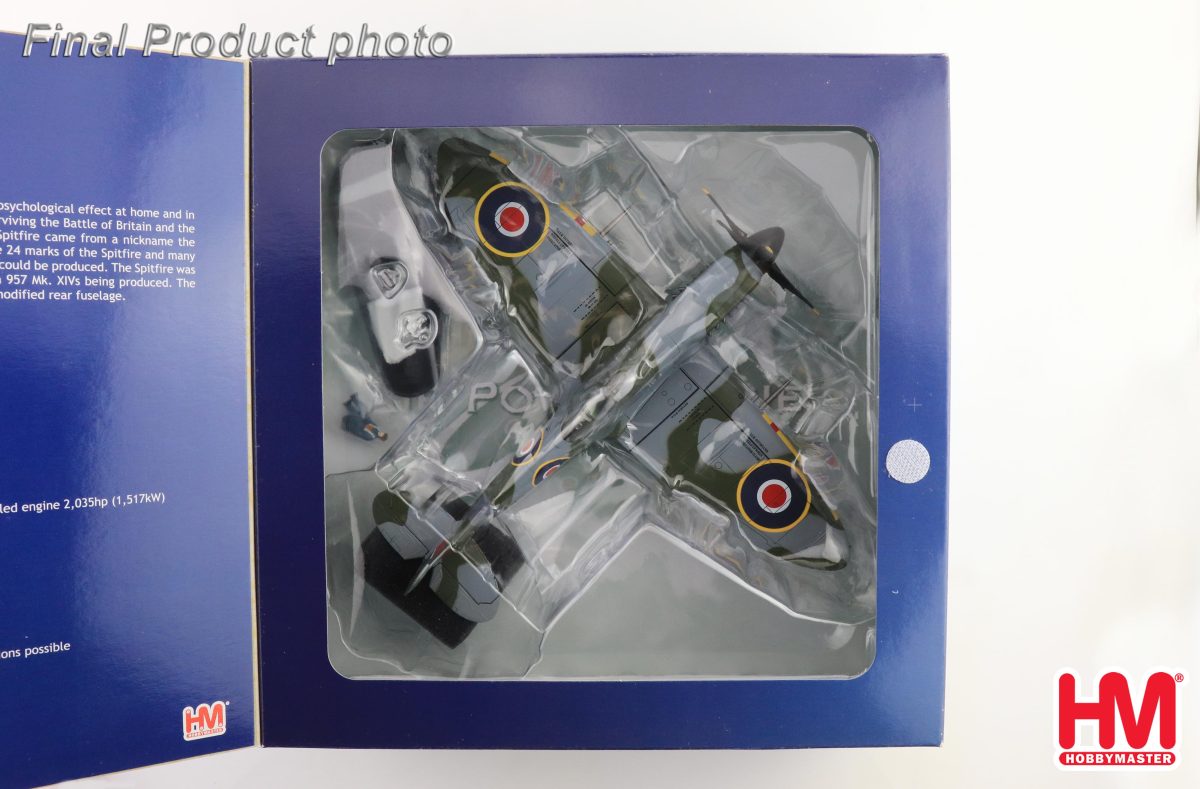Supermarine Spitfire Mk XIV – 125 Wing, RAF, Johnnie Johnson, Denmark, June 1945 1/48
Add to compare4 in stock
£65.00 £94.00
4 in stock
Hobby Master 1/48 scale HA7114: Supermarine Spitfire Mk XIV MV257 of 125 Wing, RAF, Johnnie Johnson, Denmark, June 1945. Production run of 600 models
Length 8.25 inches Wingspan 9.25 inches
James Edgar “Johnnie” Johnson was the top RAF Ace to survive WWII with 38 kills. In early July 1944 Group Captain Johnson was placed in charge of the 127 Canadian Spitfire Wing, 2nd TAF (Tactical Air Force) comprised of 404, 441 and 442 Squadrons of the RCAF. Being a Wing Leader he was able to use his own initials instead of the unit code. Johnson also held the record of never being shot down and only having one German shell hit his plane throughout the entire war.
The Mk XIV was the most notable of the Spitfire family. Originally it was based on a strengthened Mk VIII airframe so a 2,035 hp Griffon 65 engine could be used. The Griffon came with a two-stage supercharger and a 5 bladed propeller. The fin area and rudder were enlarged and the overall fuselage length was increased. The new Griffon engine surprised some test pilots because it rotated in the opposite direction of the Merlin engine. The E winged variant allowed for improved armament.
Designed by R.J. Mitchell to meet a British Air Ministry specification, the Supermarine Spitfire first flown on March 5th, 1936. With its combination of beautiful fighter design, the excellent performance of its Rolls-Royce Merlin powerplant and firepower provided by twin cannons and four machine guns, the Spitfire became an unrivalled symbol of victory. The Spitfire had 40 major variants and was built in greater numbers than any other British aircraft of the time. It flew operationally on every front between 1939 and 1945 and was engaged in every one of the Royal Air Force’s major actions.
The ‘Griffon 65’ was the powerplant of choice for the Mk. XIV Spitfire. It was a whopping 37 litre twin-supercharged V-12 powerhouse that could produce some 2,050 HP. This needed a very capable front end to deliver the huge power and that came in the shape of a 10’ 5”, five-bladed propellor made by Rotol Airscrews, a company formed by Rolls-Royce and Bristol Motors in 1937 (Rotol is actually named after both founding companies: Ro + tol).
The power gave quite the swing on take off which not only required some skilful input from the pilot, it required the opposite foot to that most were used to. The Merlin produced a left swing requiring right pedal to balance, whereas the Griffon caused a right swing and a left foot to keep straight. The designers tried a six-bladed contra-rotating propellor on a test aircraft but at the time the complex propellor gearbox didn’t deliver consistent results, so this was abandoned until improvements were found (which were later installed on such aircraft as the Seafire).
With engine ready, Supermarine used the base design of the Spitfire Mk. VIII airframe and following a nose extension to accommodate the Griffon engine, and a few other tweaks including a bigger fin and rudder to help manage the torque, Supermarine presented the Mk. XIV to a ready and waiting British military.
The Mk. XIV rolled out of production in October 1943 and entered active service in early 1944. And it came head-to-head with its German opposition the Messerschmitt Me 109G-6. Reports came back thick and fast about the MK. XIV’s performance. It was found to be faster than the MK. IX throughout its entire performance envelope and it could achieve an almost vertical climb at a rate approaching 5,000 ft / min!
Production picked up (although never got close to the Mk. IX) with assembly plants located at Aldermaston, Chattis Hill, Keevil, Southampton and Winchester. These facilities produced two variants of the Mk. XIV: the ‘F’ (Fighter version) and the ‘FR’ (Fighter-Reconnaissance).
The FR had a distinct-looking camera window on both sides of the fuselage a little aft of the canopy. Talking of canopies, there were two options that were accommodated by the fuselage being built as either a ‘High Back’ or a ‘Low Back’. The ‘High Back’ had the normal classic Spitfire three-piece canopy, whereas the ‘Low Back’ had the bubble canopy. The Mk. XIV ‘F’ could have a ‘High Back’ or ‘Low Back’ whereas the ‘FR’ only ever had the classic ‘Low Back’.
Pilots were drawn to its boost in power and speed over other Mks. Indeed, Spitfire test pilot Jeffrey Quill described the Mk. XIV as a “splendid and potent aeroplane!” In level flight it could achieve an amazing 400 mph at 2,000 ft, 417 mph at 12,000 ft, and could top out as high as 446 mph above 25,000 ft.
The Mk XIV was used extensively by the 2nd Tactical Air Force as their main high-altitude air superiority fighter in northern Europe and it was populated into six squadrons. But perhaps the Mk. XIV is best known for its ability to deal with the infamous V-1 Missile.
The V-1 missile (‘V’ meaning ‘Vergeltungswaffen’ in German) was commonly called the ‘doodlebug’ and it was a fearsome unknown object when it crossed the shores heading for London on 13th June 1944. It was just over 8 metres long (excluding the jet engine tail pipe) and had a wingspan of about 5.5 metres. It was generally launched from catapult ramps and flew close to 400 mph, making it incredibly difficult to defend against at those speeds.
However, Mk. XIV equipped 91 Squadron did more than their fair share. They began air patrols on 16th June and had their first V-1 victory at the hands of Flight Lieutenant H. Moffett when he destroyed a V-1 over Kenley in Surrey having been in pursuit for some 20 miles In total, 91 Squadron defeated an amazing 104 of the 300 V-1 victories recorded by Mk. XIV pilots.
Following the V-1 was the V-2; a long-range ballistic missile. But the Mk. XIV did its part there too, for, in December 1944, they carried out the heaviest fighter-bomber raid of WWII when they hit a V-2 rocket facility.
Outside of its operational duties against the V-1 (and V-2), the Mk. XIV also took up arms against another new era of aviation in the war. A little before the V-2 raid, another new initiative was necessary, this time to defend against the formidable and what must have felt like something right out of the future; a ‘Jet Fighter’! Or, more specifically, the Messerschmitt Me 262.
The first victory against an Me 262 was actually recorded by a Mk. IX (of 401 Squadron) on the 5th October 1944, but the sheer speed and performance of the Mk. XIV was recognised as a strong counter-defensive against the Me 262 for there wasn’t much in the sky that could get anywhere near it at nearly 550 mph! So, the Mk. XIV was sent up on something probably not many people expected to say at the time; ‘anti-jet’ patrols.
In total, 957 Mk. XIVs were built. After the war, those that remained in service (and a few that were close to airworthy) were exported to a number of foreign air forces; 132 went to the Royal Belgian Air Force, 70 went to the Royal Indian Air Force, and 30 went to the Royal Thai Air Force.
| Weight | 1.5 kg |
|---|


